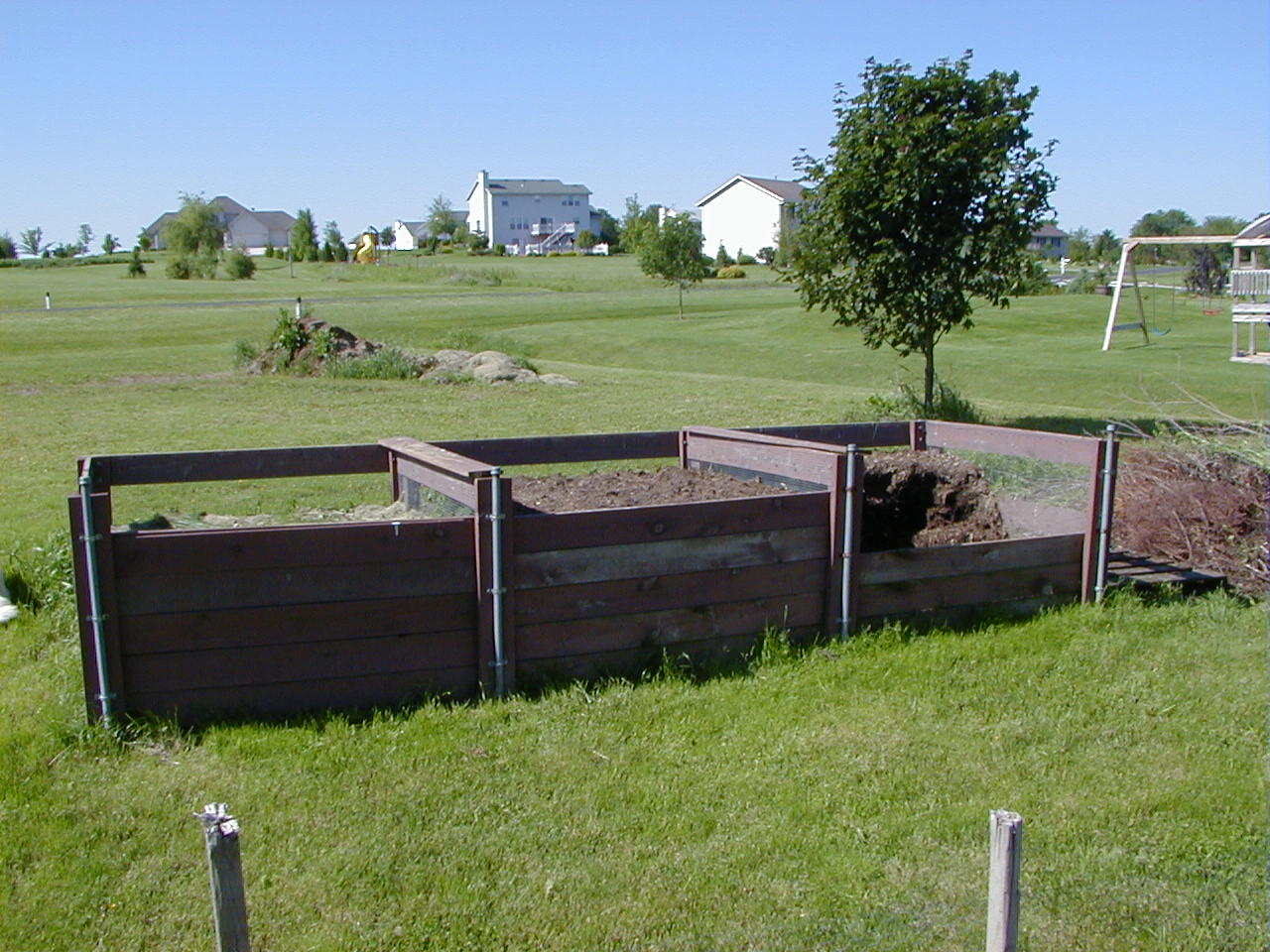
Overview
Home composting is an easy and inexpensive way to create a valuable soil amendment from yard and household waste. Composting means less waste going into the landfill and less need for chemical fertilizers.
While many people simply pile their compost in a heap, others may want to use a bin to contain their compost and speed up the composting process. Compost bins vary in size, use, and cost, whether you purchase a commercial product or build one yourself. This Do-It-Yourself Compost Bin series provides you with all you need to know to build your very own compost bin.
Wood 3-Bin Composter
This three-bin wooden unit (figure 1) is a sturdy system that allows you to quickly make a large volume of compost, if you turn the compost weekly. The unit can also be used as a holding unit for the slow composting of yard materials. Note that building this bin system requires some carpentry skills.
There are two ways to use this system as a turning unit:
- One method is to build a compost pile in one of the end sections, transfer the materials after a time to the middle section, and then transfer them to the third section.
- A second method is to build two compost piles, one in each end section. Transfer the materials from one section to the middle section and then back to original end section. Repeat the process for the pile in the other end section.
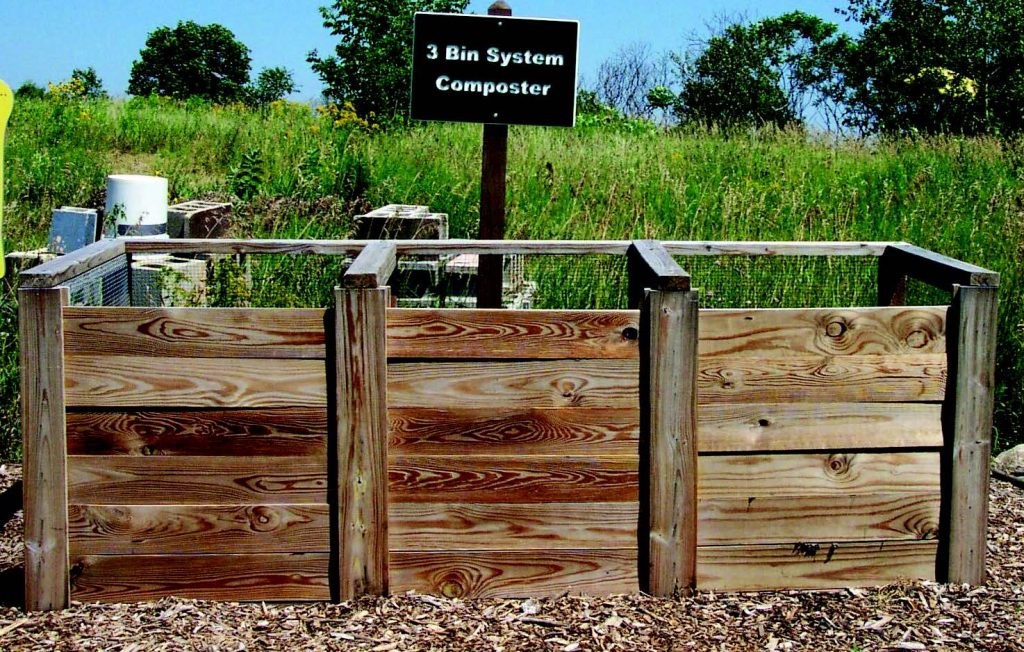
Cost: $$$
More with new materials; less if recycled materials are used.
Capacity: Thirty to thirty-eight 30-gallon bags of yard materials.
Degree of difficulty: ✪ ✪ ✪
Above-average building skills needed
How to construct
Materials
- 2 x 4 cedar or non-arsenic pressure-treated lumber
- 8 pieces 36” long for (A) divider (two 12’ boards)
- 8 pieces 32” long for (A) divider (two 12’ boards)
- 3 pieces 9’ long for (C) top support and two (B) base boards (three 10’ boards)
- 1 x 6 cedar or non-arsenic pressure treated lumber
- 4 pieces 36” long for (D) inside and (E) outside front slat runners (one 12’ board)
- 1 piece 35” long for (F) back slat runners; rip cut into 1¼”-wide strips
- 18 pieces about 31” long for (G) slats (five 12’ boards – includes F)
- 21’ of 36” wide ½” hardware cloth
- Three pounds 16d hot galvanized nails
- One-half pound 8d hot galvanized casement nails
- 250 poultry wire staples
- 12 stainless or hot galvanized carriage bolts, ½”
Lid (optional)
- 2 x 4 cedar or non-arsenic pressure-treated lumber
- 1 piece 9’ long for (H) lid back (one 10’ board)
- 2 x 2 cedar or non-arsenic pressure-treated lumber
- 1 piece 9’ long for (I) lid front (one 10’ board)
- 4 pieces 32 ½” long for (J) lid cross supports (one 12’ board)
- 2 pieces 9’ long for (K) closure boards (two 10’ boards)
- 1 piece 9’ long for (I) lid front (one 10’ board)
- 5 pieces corrugated fiberglass top (L) 36” long by 25” wide (one 12’ and one 8’ piece)
- 40 gasketed aluminum nails
- Four galvanized hinges, 4”
- Eight flat corner braces with screws
- Four flat T braces with screws
- Two 36” lengths #2 coil chain
- Two stainless 3” long eyehook bolts with nuts
- With stainless 3” long eyehook lag bolts
- Four quick links or carabiners
Tools
- Circular saw
- Power drill
- Hammer
- Level
- Pliers
- Square
- Tape measure
- Wire cutters
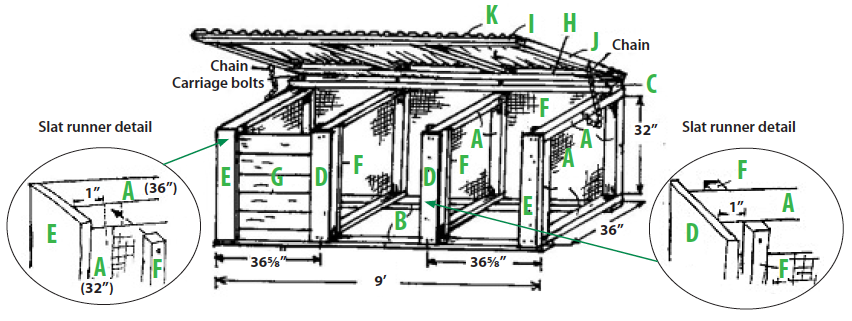
Construction details: Bin
- Select the bin site and level the ground, if needed. Choose wisely as this bin will not be easy to relocate!
- Build dividers (A). Butt-end nail two 32” and two 36” pieces into a 35 x 36” square. Repeat the process to make four identical dividers.
- Cut four 35” sections of hardware cloth. Clip any extra wire off the ends. Stretch the hardware cloth across one side of each frame; check the frames to make sure they are square. Staple the cloth tightly into place every 4” around edge.
- Cut three 2 x 4s to 9-foot lengths for two base boards (B) and one top support (C).
- Set dividers (A) parallel to one another about 3 feet apart. Make sure dividers are positioned with the 36” pieces on the top and bottom and the 32” pieces on the sides.
- Lay two 9-foot base boards (B) on top of the dividers. Position end dividers flush with the ends of the base boards. Center two inner dividers so the center of the inner divider is 36 5/8” from the end of the base board (see figure 2).
Important: line these up accurately so the front slats (G) will fit correctly. - Attach base boards (B) to dividers using two carriage bolts per divider. Drill a ½” hole first and then insert bolts from the base board (B) side through the divider board (A). Secure with washers and nuts but don’t tighten all the way down yet.
- Turn the unit right-side up and attach the 9-foot top support (C), again lining dividers up carefully, as in step 6, before drilling holes and installing four carriage bolts. Use a carpenter’s square or measure between opposing corners to check that the bin is square; then tighten the bolts.
- Cut a 9-foot length of hardware cloth and fasten it to the back of the bin with staples placed 4” apart along the frame.
- Make front slat runners (D and E). Cut four 36”-long pieces of 1 x 6. Take two boards and rip cut them to 4¾” wide (E). Save the excess for later use (F). Nail two 4¾”-wide boards (E) to the front of the outside dividers making them flush on the top and outside edges. Nail two 1 x 6 boards (D) to the front of the inner dividers. Line them up flush on top and overlap dividers equally on each side.
- Create the back slat runners (F). Cut one 35”-long 1 x 6 and rip cut it into four equal pieces, each about 1¼’ by 35” (wider strips work fine too).
- After first drilling holes to prevent splitting, nail the back slat runner (F) into the side of the divider so the back slat runner is parallel to and 1” behind the front slat runner.
- Cut the front slats (G) from the remaining 1 x 6 to be 31” long (measure the clearance before cutting).
Construction details: Lid
(Optional)
- Cut the 2 x 4 to 9’ for the back of lid (H). Cut one 2 x 2 to 9’ for the front of lid (I). Cut remaining 2 x 2 into four pieces, each 32½” long, for the lid cross supports (J).
- Lay the boards for the lid out on the ground and check that they are square. Screw in the four corner braces and the four T braces on the bottom side of the frame. Flip the frame over and attach the other four corner braces to other side.
- Place the lid frame, T brace-side down, on the bin and attach it with hinges.
- Trim width of the fiberglass sheets (L) to make the front and back edges flush with lid frame (use a circular saw). Cut fiberglass into five lengths, approximately 36” each, being sure they overlay each other by at least one channel. Set the fiberglass into place, then predrill the top of every third fiberglass and closure board hump for each nail hole. Nail with gasketed nails.
- Add chains to allow the lid to lean back far enough to stay open but not so far as to fall back and break the hinges. Mark the location of the stainless eyehook lag bolts on the sides of the end dividers (A) approximately 24” from the corner where the lid attaches. Predrill starter holes to avoid splitting the wood. Screw the bolts in place with pliers.
- Mark the location of the stainless eyehook bolts on both sides of the lid (J) approximately 24” from the back corner of the lid. Drill holes through the side of the lid frame. Insert stainless eyehook bolts and fasten with nuts.
- Attach quick links to the eyehook bolts on the lid and the end dividers. Connect one length of the chain to quick links on each side of bin.
Conclusion
Now you are ready to set your bin out in your yard and begin composting! Learn more about making and using compost in the garden as you get started.
Authors: Joe Van Rossum, former Recycling Specialist and Director at the Solid & Hazardous Waste Education Center (SHWEC)
Rev: 2013
Item number: G4020-07
References
Composting to Reduce the Waste Stream (NRAES-43) Plants and Life Sciences Publishing (PALS), Cornell Cooperative Extension http://palspublishing.cals.cornell.edu/ nra_order.taf?_function=detail&pr_ booknum=nraes-43
Master Composter Resource Manual Cornell Waste Management Institute cwmi.css.cornell.edu/ mastercompostermanual.pdf





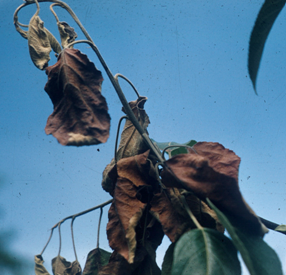 Fire Blight
Fire Blight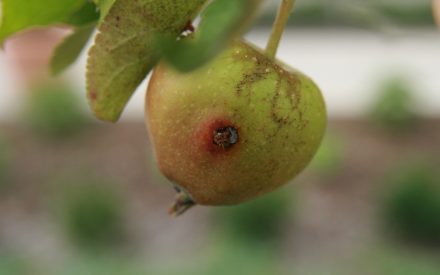 Apple Pest Management for Home Gardeners
Apple Pest Management for Home Gardeners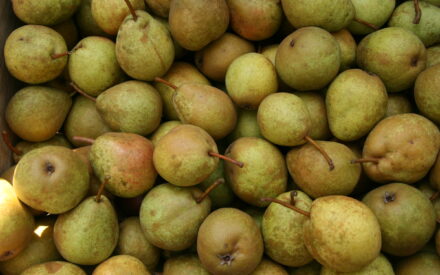 Growing Pears in Wisconsin
Growing Pears in Wisconsin Raspberry Disorder: Fire Blight
Raspberry Disorder: Fire Blight


